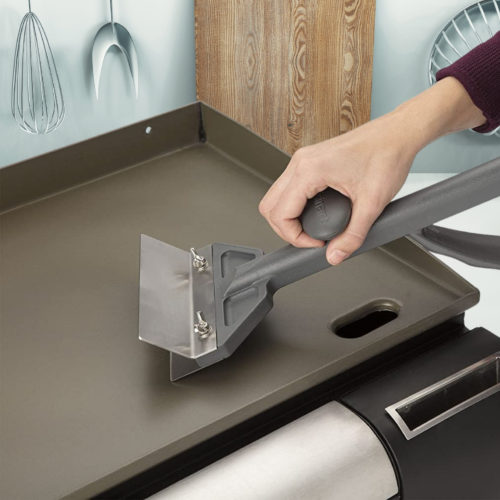How to Clean a Teppanyaki Grill Plate: 8 hibachi chef tips
Cleaning a teppanyaki grill is no easy feat. It’s a tedious task if you don’t know the right way to do it.
You might’ve tried many cleaning products in an attempt to get your teppanyaki grill clean, but most of them are just too harsh and leave behind residue or smell bad.
This article will explain how to clean a teppanyaki grill (or hibachi as some mistakenly call it) properly so that it stays squeaky clean for next time!
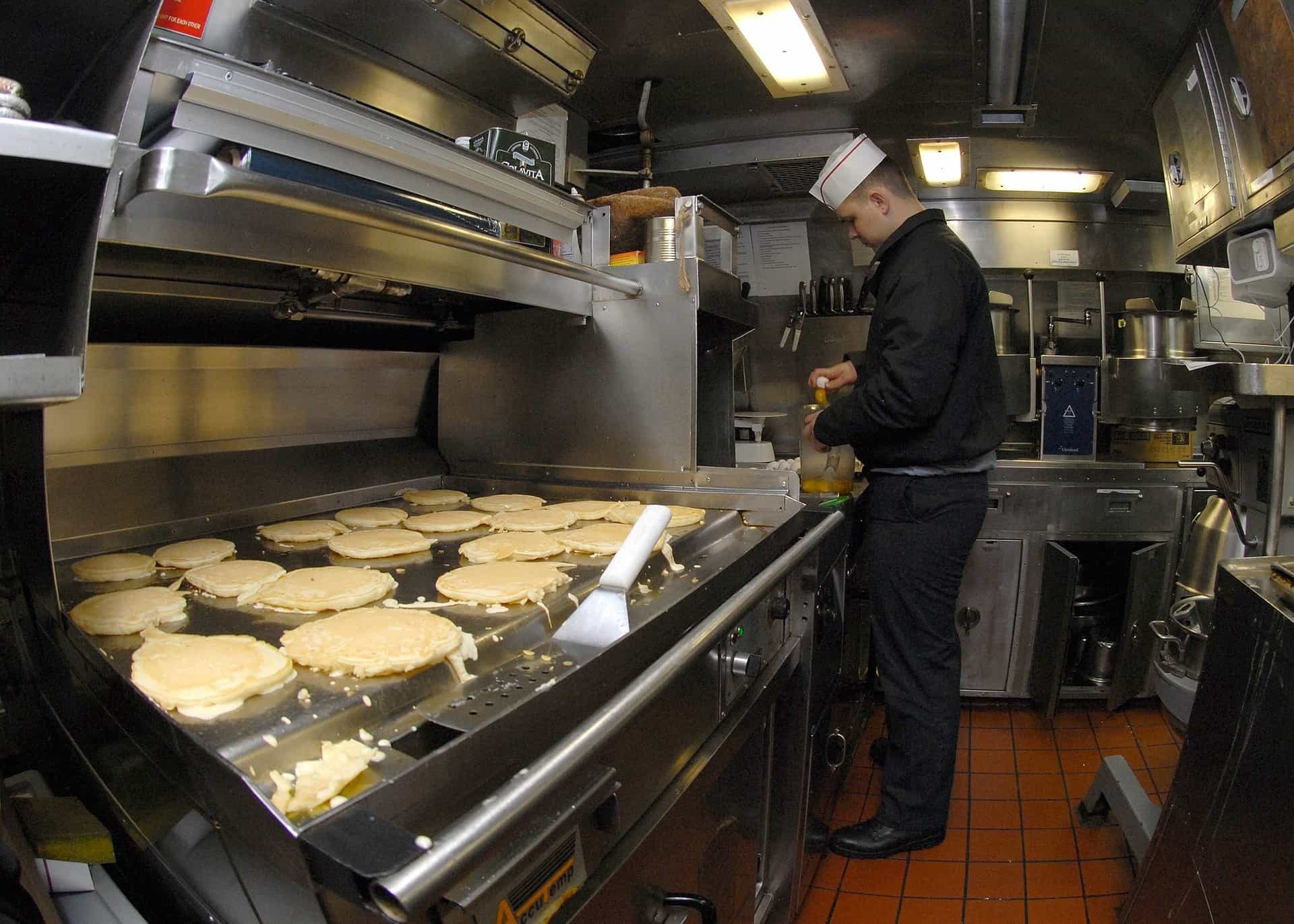
All those ingredients reacting to the hot vegetable oil, remnants of fried eggs, stir-fried vegetables, tiny bits of meat, dashi, soy sauce, pepper, salt, and the whole gamut of herbs and spices all contribute to that dried, flaky, and burned tiny lumps scattered across the grill’s surface.
No matter the frequency in which you will use the grill (daily or weekly), it’s imperative that you will prioritize cleaning it regularly to avoid residual flavor carrying over the next time you’ll cook something on it.
Of course, there are dozens of ways to go about cleaning your teppanyaki iron griddle, but we thought that you might want to try some of our tips below.

Check out our new cookbook
Bitemybun's family recipes with complete meal planner and recipe guide.
Try it out for free with Kindle Unlimited:
Read for freeIn this post we'll cover:
Signs That Your Teppanyaki Grill Needs Cleaning
- Food sticks to griddle
- Food cooking unevenly
- Flavor transfer between foods
- Grease buildup on the griddle surface
- Flakes of burnt oil ending up in the food
How to Clean a Hibachi/ Teppanyaki Grill
Materials
- 1 grill scraper
Instructions
Cleaning Non-Chromium Surfaces
- Heat up the grill and scrape off the excess food and grease from the surface of the grill with a grill scraper (do this every time after you’ve cooked something or a batch of recipes). Slide the food into the waste drawer of the teppanyaki grill and throw empty it once you’re done cooking. You can also do this with non-stick teppans.
- Sometimes the grill is caked with burned food that you'll have to use a scouring brick to rub off of the grill’s surface. Just keep in mind to rub along the grain of the grill so you won’t damage it. Don't do this with non-stick teppans for home use!
- Empty, wash and sanitize the waste drawer of your teppanyaki grill at the end of each day as well, then using a clean cloth polish the front end too!
- Do preventive maintenance each week as well and don’t use the grill for a good measure of 5 hours to allow it to cool off. Then using a non-abrasive griddle cleaner and a clean piece of cloth clean its surface and thoroughly rinse the entire teppanyaki grill with water. Let dry and prepare it for the next day.
- It is highly recommended that you re-season the grill’s surface again after your weekly cleaning and since the grill is used to cook food, you can’t spray it with anti-rust chemicals otherwise you’ll poison your guests. Just applying a thin layer of cooking oil all over the surface is good enough and will prevent rust from accumulating on your grill.
Cleaning Chromium and non-stick Surfaces
- Remove excess grease and food debris with a grill scraper, and then use a damp cloth and wipe the grill’s surface clean.
- Scrape the surface of the grill off of any food debris and use a clean cloth or really soft sponge and dip it in a mixture of soap or dishwashing liquid, then clean the surface at the end of each day. Clean the surface of the grill again with a clean dry cloth again after rinsing it off to remove the soap or dishwashing liquid along with the dirt.
Best tools to clean your teppanyaki hibachi grill
Chrome is a bit more sensitive than stainless steel, so never use the following when cleaning it:
- Pumice, griddle stones, or abrasives
- A spatula or something with a sharp edge to scrape off food from the grill surface
- Steel wool
- Chemically-prepared liquid grill cleaner
Cuisinart griddle scraper
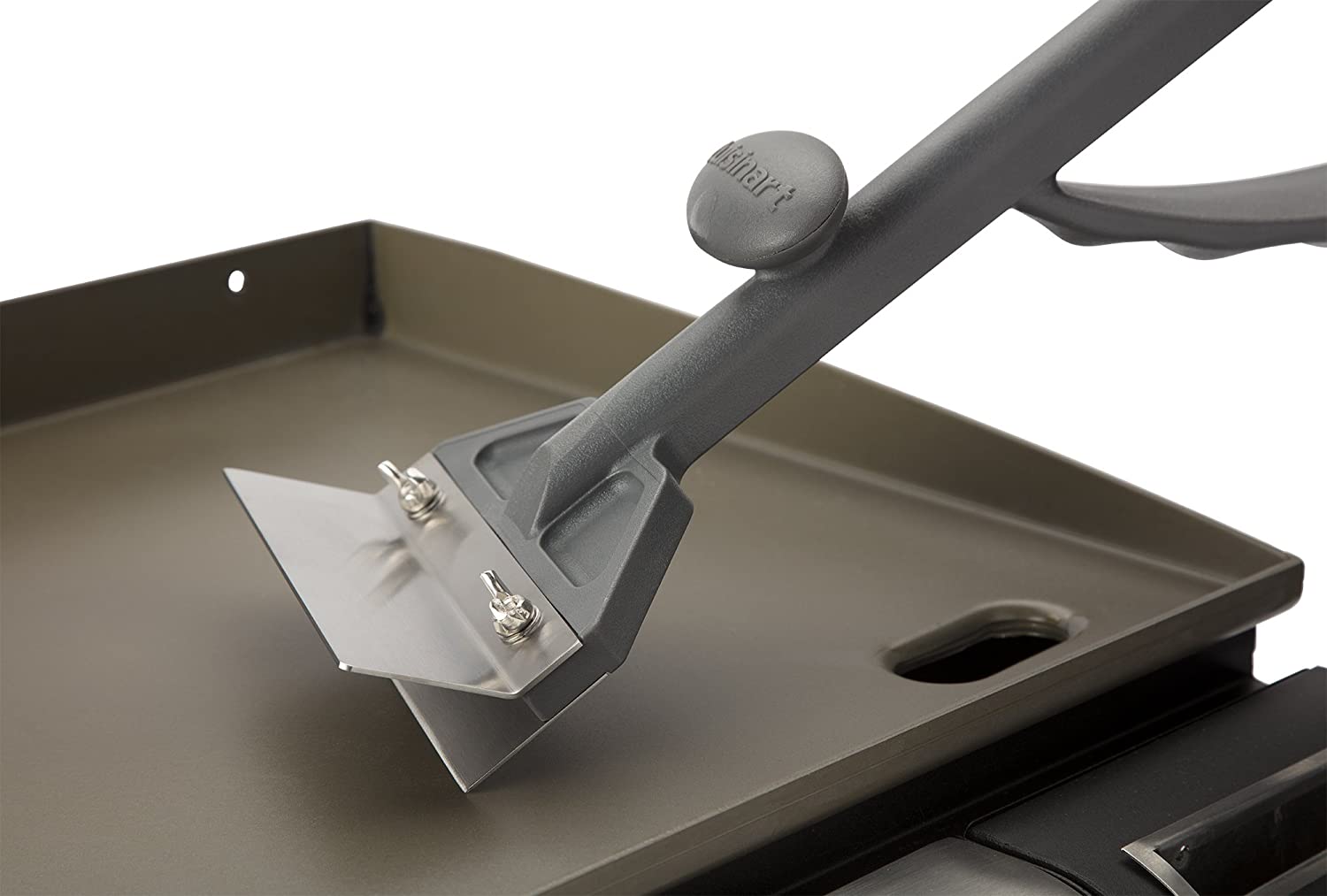
The 6-inch stainless steel blade easily scrapes away cooked debris with fewer strokes and less effort.
The splash guard prevents residue from splashing upward during cleaning, keeping oil and debris off your hands altogether so you can clean without getting dirty.
Better Grillin Scrubbin Stone
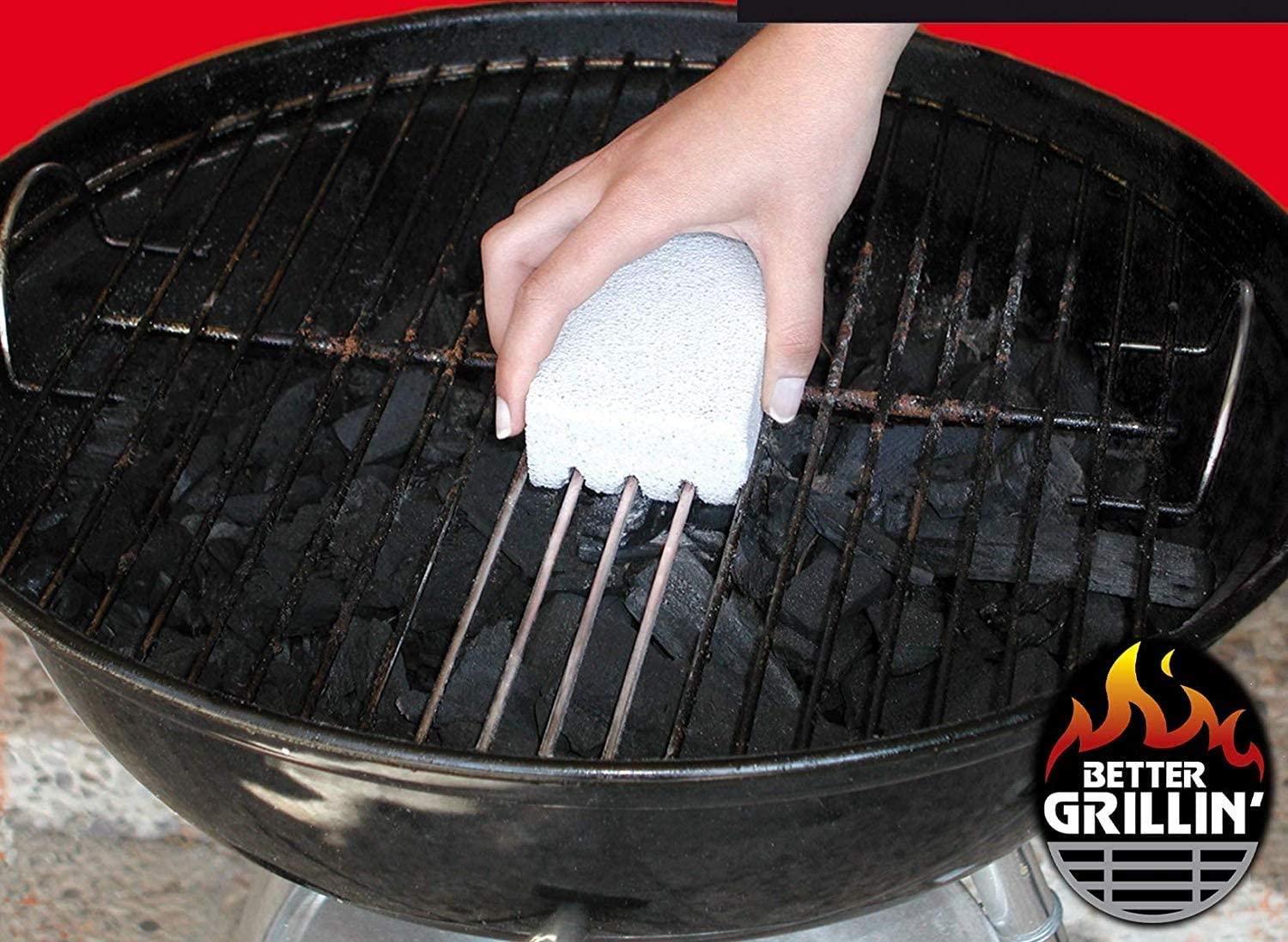
This grill scouring block is ecologically sound and provides easy cleaning. It can be used twice for really dirty grills or 6-8 times for maintenance cleaning to gently clean your surface with warm water before wiping off any residue with a damp cloth.
The block features 100% glass heated in a method similar to that of volcanic pumice stone formation which wears down much like the natural product would after use as well!
Scrub-it Non-stick teppanyaki surface sponge
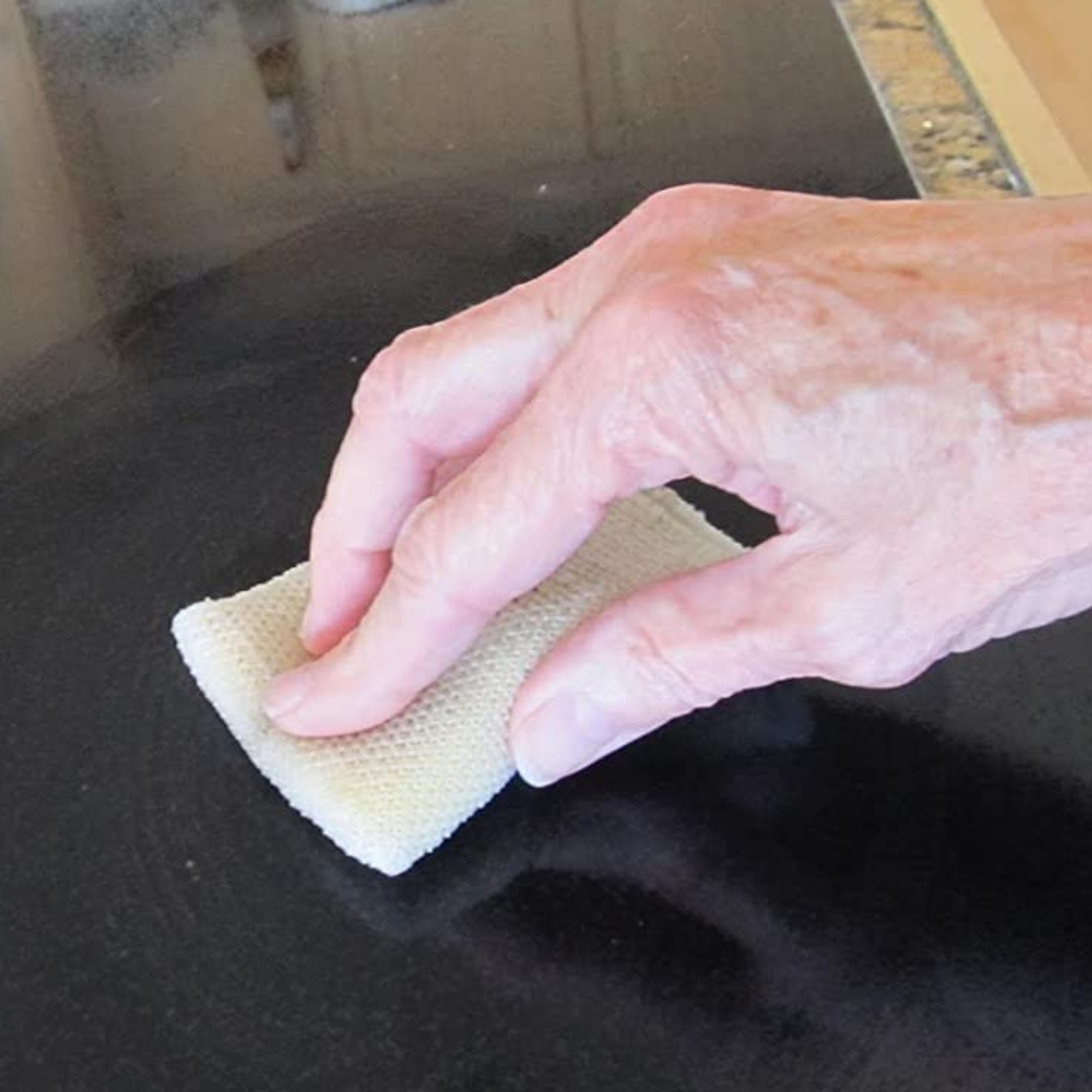
The scrub-it is made out of a premium grade non scratch surface material. These sponges can clean dishes, countertops and tiles without leaving any scratches behind!
Which is quite important for your non-stick teppanyaki grill you probably have at home.
Why Cleaning Your Teppanyaki Griddle is Important
Whether you’re cooking pancakes and crepes or burgers, sandwiches, meats or any other teppanyaki-style dishes always keep in mind to clean your grill regularly.
Because the griddle is often exposed to high temperatures the residue from meals, fats, juices and other food debris gets stuck on the grill’s surface, albeit temporarily.
The problem with not cleaning this grease and grime is that over time they continually accumulate and turn into a gummy layer (probably bacteria-laden too) and get carbonized after constant exposure to temperatures above 300 °Celsius.
Once they get carbonized, they’re extremely difficult to remove! The carbonized organic mattter on your grill will also act as a heat dampener and cause any food you’ll cook to not cook well and taste funny.
Also read: how to clean your stainless steel pan
More Teppanyaki Iron Griddle Cleaning Tips
For the most part, teppanyaki grills are often used to prepare meals to the customers, so there’s really no choice, but to clean them daily and do weekly maintenance to make them last longer.
However, if you use for private dinners and parties, then the recommended cleaning schedule doesn’t necessarily apply to you.
Whatever the case is for you this step-by-step teppanyaki grill cleaning guide will help a lot to keep your grill in tip top condition for years to come.
Step 1: Check the Traps
Most gas-fired teppanyaki grills have grease traps below the grill surface that functions as a food debris and grease collector.
When cleaning a teppanyaki grill you’ll need to clean the traps first before cleaning the grill surface, because if you won’t check the traps regularly, then it might accumulate a lot of grease and grimes which will become a bigger problem later on.
Cleaning the grill from the bottom up will save you a lot of trouble and allow your grill to function at optimal capacity.
Check if the burners are also clogged and clean those too to ensure continuous supply of heat needed to cook the food.
Step 2: Reduce Heat, if Necessary
In my opinion, if it is at all possible, I would recommend that you turn off the stove before you clean the grill; however, this might not be possible if you’re working in a restaurant, so the best you can do is minimize the heat.
If you really need to clean the teppanyaki grill while it’s still searing hot, then use heat-resitant gloves and tools, so you won’t get your hands or arms burned by accident.
The kitchen of a busy restaurant is a hazardous place!
Step 3: Apply Your High Temperature Cleaner
There are non-toxic liquid based cleaning solution for teppanyaki griddles such as the Monogram Clean Force that can be used at high temperatures.
This means that you can use it even while the grill’s stove is turned on and, in some cases, these cleansing agents works fast which will help you get back to your cooking in no time.
You’ll need to use a griddle brush that has a long handle to keep your hands from coming into contact with the hot grill surface.
You can also use an elbow grease de-greaser for stubborn spots just rinse it off afterwards.
Step 4: Put Your Grease Traps Back and Turn Up the Heat
By now you must have dismantled the teppanyaki griddle or at least partially as it does have some easy-to-remove parts, which had been designed to come off easily for cleaning and maintenance purposes.
Since you have thoroughly cleaned the grill on every corner possible, then it’s time to put the pieces back together and continue cooking amazing teppanyaki-style cuisines for your guests to enjoy.
Reseat the grease traps, put the cleaner and brushes away, and turn up the heat once more. You’re ready to rock and roll!
Pro Tips:
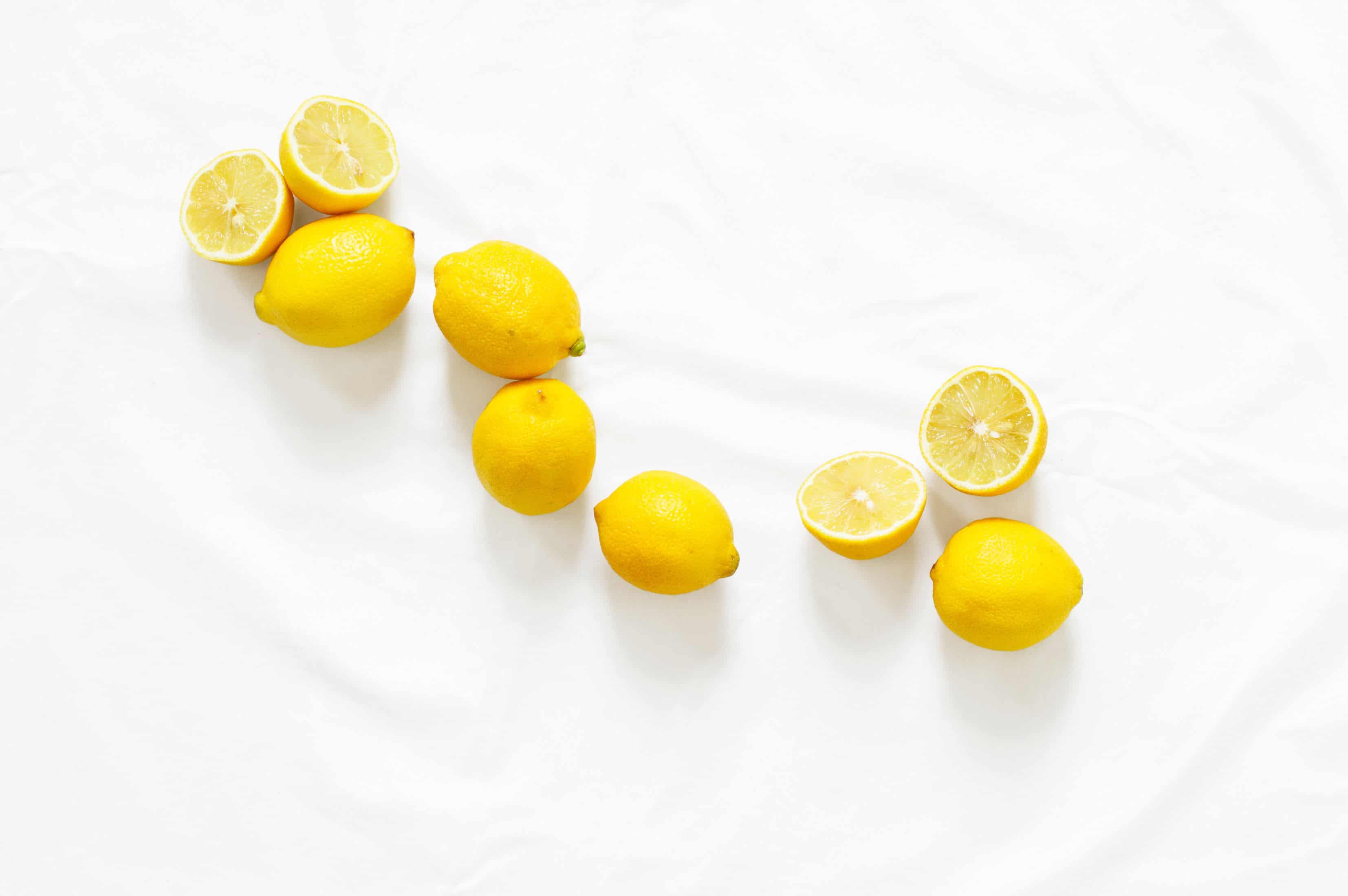
- If you don’t want to use commercial cleaning agents to clean your grill, then use lemon juice and vinegar instead as they are excellent high heat cleaners.
- Try as much as possible to squeeze into your schedule to clean the griddle completely at least once a day (your normal day may be a busy day with lots of customers, but it pays to have a clean teppanyaki grill).
- Never ignore the user’s manual for your grilling equipment as well as the instructions for your cleaners. Some accidents are caused by ignorance, so it’s better to be safe than sorry.
- Doing maintenance work on your teppanyaki griddle and cleaning it regularly will help keep it intact for years to come and you won’t be bothered looking for a new one any time soon. On the plus side you will be able to cook an assortment of teppanyaki-style recipes.
Recommended Tools to Use when Cleaning a Teppanyaki Iron Griddle
Cleaning your teppanyaki grill can be a tough job, but with the right tools you should be able to make the metals shine like new every time you’ll do maintenance work on it.
You must not used improvised tools as they might damage the grill surface and it will affect the way the food will taste, and then you’re going to have to buy a new grill.
What you must use to clean your grill are the tools listed below:
- Grill Scraper – is a kitchen implement made of metal, plastics (such as polyethylene, nylon, or polypropylene), wood, rubber or silicone rubber used to clean cooking grills by scraping stuck particles of food from their surface.
- Griddle Pad Holder – a polyethylene plastic handle that holds the grill screen and grill cleaning pads together when cleaning the grill.
- Scouring Brick – a molded mass of abrasive or siliceous earth, usually in the form of a brick, used for scouring the surface of the teppanyaki grill to remove stains and other
soiled food remains. - Grill Screen – a metal screen used in conjunction with the griddle pad and griddle pad holder to clean the teppanyaki grill’s surface and remove any food debris.
- Stainless Steel Cleaning Chemical – liquid based chemicals that are typically non-toxic and can just be removed easily by rinsing the grill surface with water. These cleaning agents are not to be used with chrome steel commercial or teppanyaki grills.
- Steel Wool – a wire mesh made like a brush/sponge to clean metal surfaces (mostly kitchen utensils including teppanyaki grills) and remove oil, dirt, dust and food debris.
- Cleaning Brush – a wooden or plastic brush with a long handle to keep your hand from coming into contact with the hot grill while you clean it.
- Heat Resistant BBQ Gloves – used to protect your hands from burning when you really have to get into the drill to clean it inside out.
- Commercial Grade Griddle Cleaner Pads – a silicone pad that’s used to remove the sticky soiled food debris off of the grill surface.
- Clean Cloth – you will need these to wipe the grill clean and dry after rinsing it with water.
- Soap/Dishwashing Liquid – a substitute to those high-temp chemical grill cleaners and works just as well.
- Cooking Oil – used to prevent the grill’s metal from rusting.
- Warm Water – metal expands when a high temperature is applied and it also contracts when a cold substance is applied to it. Therefore it is wise to use warm water when rinsing the teppanyaki grill otherwise the metal might experience tensions and stresses from sudden temperature change and it will break under all that pressure.
Conclusion
The teppanyaki grill is an excellent addition to your kitchen because it gives you additional options to diversify your menu.
It comes both in stainless steel or chrome construction for your cooking convenience and if properly maintained on a regular basis, then it will last longer than what is normally expected of its lifespan.
While the tips that was discussed above may not be the complete guidelines on how to clean and maintain your teppanyaki grill, it does cover a lot of details on the subject and should be used as a standard for cleaning teppanyaki and commercial grills.
You may also do further research to acquire new information on how to clean your teppanyaki and commercial grill properly apart from this blog post.
Also check out this post about cleaning the grill with just vinegar
Check out our new cookbook
Bitemybun's family recipes with complete meal planner and recipe guide.
Try it out for free with Kindle Unlimited:
Read for freeJoost Nusselder, the founder of Bite My Bun is a content marketer, dad and loves trying out new food with Japanese food at the heart of his passion, and together with his team he's been creating in-depth blog articles since 2016 to help loyal readers with recipes and cooking tips.

